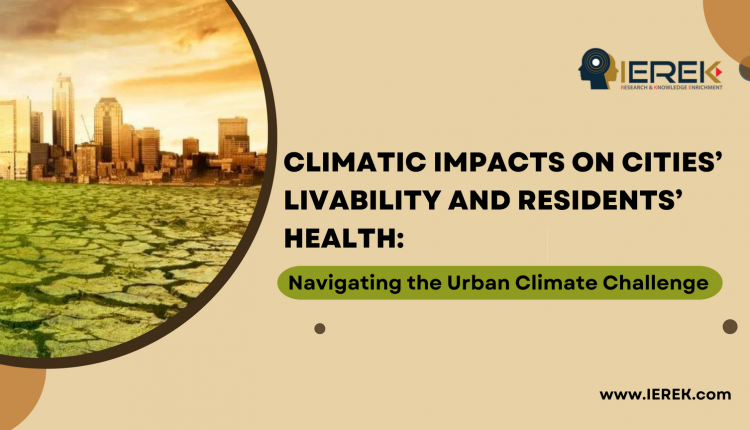Climatic Impacts on Cities’ Livability and Residents’ Health
Navigating the Urban Climate Challenge
In the dynamic landscape of urban living, the climatic conditions of a city play a pivotal role in shaping its overall livability and influencing the health of its residents. As we navigate the complexities of the Urban Climate Challenge: Navigating Climatic Impacts on City Livability and Resident Health, understanding the profound impact of climate on our well-being becomes paramount. In this article, we will delve into the intricate relationship between climatic factors, city livability, and the health of those who call these urban hubs home.
Unveiling the Connection: Climate and Urban Livability
1. Defining Urban Livability in a Changing Climate
Urban livability is a multifaceted concept that encompasses various elements, from infrastructure to social dynamics. However, the climatic conditions prevailing in a city can either enhance or diminish its livability. From extreme temperatures to unpredictable weather patterns, each aspect contributes to the overall urban experience.
2. The Impact of Temperature Extremes
One of the most palpable effects of climate on urban areas is the rise in temperature extremes. Urban heat islands, characterized by elevated temperatures in built-up areas, pose a significant challenge to residents. Beyond discomfort, prolonged exposure to extreme heat can have detrimental effects on physical and mental health.

3. Water Scarcity and Its Ripple Effect
In an era of changing climate, water scarcity emerges as a critical issue affecting urban livability. Depleting water resources can lead to restrictions, affecting daily life and exacerbating health concerns. The importance of water conservation and sustainable management practices becomes apparent as cities grapple with the dual challenge of demand and supply.

Navigating Climatic impacts & Health Challenges in Urban Environments
4. Respiratory Health in Polluted Urban Air
Urbanization often goes hand in hand with increased air pollution, posing a direct threat to respiratory health. The presence of pollutants in the air can lead to a surge in respiratory conditions, impacting the quality of life for city dwellers. From asthma to other respiratory ailments, the need for proactive measures to mitigate air pollution becomes imperative.
5. The Role of Green Spaces in Mental Well-being
Amidst the concrete jungle, the significance of green spaces cannot be overstated. Parks and recreational areas not only provide a respite from the urban hustle but also contribute to mental well-being. Access to green spaces has been linked to lower stress levels and improved overall mental health among city residents.
Strategies for Climate-Resilient Cities
6. Urban Planning as a Catalyst for Change
Effective urban planning emerges as a key player in fostering climate-resilient cities. Integrating green infrastructure, sustainable building practices, and prioritizing pedestrian-friendly urban spaces can collectively contribute to a more livable and healthier cityscape.

7. Community Engagement and Climate Awareness
Empowering communities with the knowledge and tools to navigate climatic challenges is integral to building resilience. Public awareness campaigns, community-driven initiatives, and educational programs can create a collective consciousness, fostering a sense of responsibility toward environmental sustainability.
Toward a Sustainable Urban Future
As cities grapple with the consequences of a changing climate, the imperative to prioritize urban livability and residents’ health cannot be overstated. From the scorching heat of summer to the challenges posed by polluted air, each climatic factor presents a unique set of challenges. However, through strategic urban planning, community engagement, and a commitment to sustainable practices, cities can not only adapt but thrive in the face of climatic uncertainties. By recognizing the interconnectedness of climate, livability, and health, we pave the way for a sustainable urban future where residents can enjoy a high quality of life despite the challenges posed by a changing climate.
In the upcoming 3rd edition of the international online conference organized by IEREK and hosted by the University of Perugia, Italy from July 16 to July 17, 2024, the focal point will revolve around Health & Environmental Resilience and Livability in Cities (HERL). Know more about the HERL Conference Here


